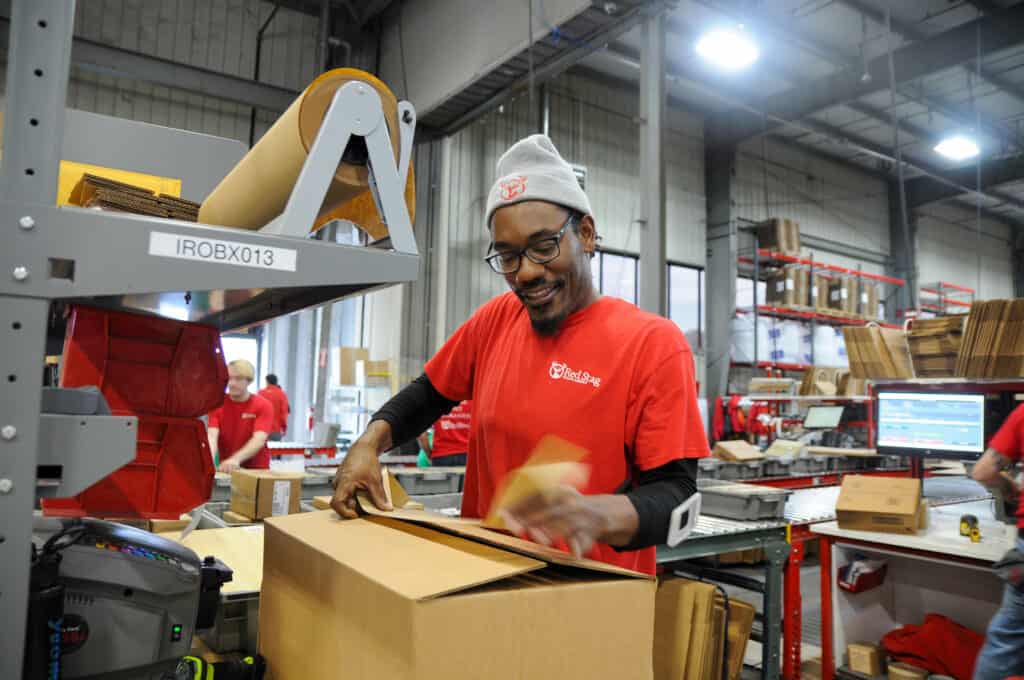Manufacturing facilities are not the most exciting places. They’re noisy, dirty, and just plain dull. For many people, they’re the last place they want to go. But if you want to increase productivity at your factory, it’s time to step up your game.
Production facilities are complex operations, and there is no one-size-fits-all solution for improving productivity. However, by automating as much as possible, you can reduce the time required to complete tasks, which will allow you to increase overall throughput.
If you’re running a manufacturing facility, then chances are you’re already doing some of these things. Some facilities even have a dedicated team that does nothing but focus on improving productivity; there’s an “efficiency” group for a reason!
At the end of the day, productivity is all about how much you can do in a given time.
There are many ways to increase productivity at your manufacturing facility, but these five proven methods will help you get it done faster:
Table of Contents
1. Automate As Much As Possible.

Automation is the key to increasing productivity in manufacturing facilities. It allows you to increase output and efficiency, while also reducing errors.
The most important thing about productivity is what you do with the results. The first step in increasing productivity is to measure it. Once you have a baseline for your current process, you can identify the areas where improvements can be made.
One of the most common ways to improve productivity at your manufacturing facility is to invest in fluent products or technology that can optimize your manufacturing process, like conveyors. These machines help move parts from one location to another, reducing downtime and waste in the process. You can also use them to reduce labor costs by automating as much as possible.
2. Invest in Technology.
Use software applications for scheduling tasks and tracking inventory levels across multiple departments within your facility.
This software helps streamline production by scheduling jobs so they align with other teams’ schedules and achieve peak efficiency throughout each day of operation (and even during holidays). It also allows you to see how much inventory is in stock at any given time — which allows you to keep tabs on what’s running low and order additional supplies if necessary (without having to contact employees directly). Plus, it allows you to keep track of all those pesky inventory numbers!
3. Create A System For Quality Control And Customer Service.
Quality control and customer service are two crucial factors to consider when setting up a manufacturing facility. These two aspects can be easily overlooked, but they are very crucial in order to increase productivity and profitability.
It’s important to know what makes up your product, as well as how it’s made, so you can ensure that it meets consumer expectations. A good quality-control program will allow you to track every step in the production process and make sure it’s done right the first time.
Quality control should also help you identify any problems with products before they reach customers. For example, if there are problems with one of your products, you want to know about them before someone else ships a defective item off to a customer who didn’t order it in the first place!
Customer service is also an important aspect of manufacturing. If you don’t provide good customer service, your customers may not come back to you in the future or even tell their friends about how they were treated poorly by your company. Customer service is also related to quality control because if a customer doesn’t like something about his purchase or experience with your company, he will likely spread negative word-of-mouth marketing about it so others won’t buy from you again.
4. Make Sure Everyone Gets The Same Information In The Same Way.
Another thing you can do to increase productivity at your manufacturing facility is to make sure everyone gets the same information in the same way. This doesn’t mean you have to have a single source of truth, but it does mean that everyone understands what is happening and why.
If your employees don’t understand how their work affects the bottom line, they won’t be able to execute it properly. Being transparent about how the business works helps people see why certain decisions were made and motivates them to take action.
For example, if you want to raise prices but are worried about losing customers, explain why this will happen and how it can be avoided by making changes in your product or service offering.
5. Implement An Efficient Workflow Process So Everyone Knows What Steps To Take Next When They Work On A Project Or Task.
Workflow is the process of completing tasks or projects that are assigned to employees. When you have a well-defined workflow process, your employees know what steps to take, and when, as they work on a project or task. They can easily see if they are in their own area of operation or if they need to ask for help from someone else. The process should include all steps needed to complete the task efficiently and effectively, including:
– The start point (the beginning)
– The middle point (where things become more difficult)
– The endpoint (where things become easier)
An efficient workflow ensures that your employees are able to complete their tasks in an organized way, which makes them more productive and efficient at work.
Important Note: Identify Bottlenecks, Then Eliminate Them.
The more people you have working on projects at once, the more time you’ll save in the long run. When there’s only one person working on a project, it may take him/her longer than necessary because he/she is constantly checking with other employees about progress and asking questions about individual tasks involved in the project. By breaking down large projects into smaller chunks and assigning specific tasks to each person involved in the project, you can ensure that there’s only one person doing each task at any given time (and no back-and-forth communication is needed between different employees).
Takeaway
There are plenty of ways to increase productivity at your manufacturing facility. The best way to do this is by seeking out new and different techniques, whether it be within your production space or in the office. Assess the needs of your organization and potential areas where future growth can occur then implement these strategies while keeping productivity in mind. You will see improvements across the board when you incorporate these into your standard operating procedures.















